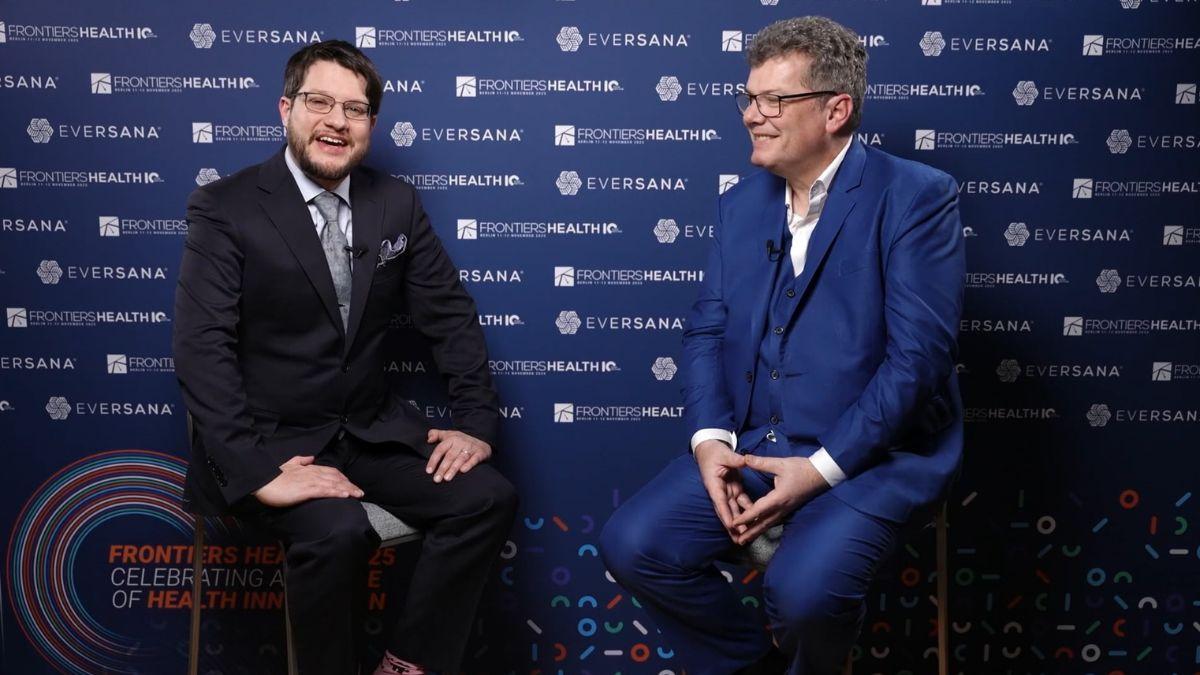Hyperscaling healthcare with data science

A select few researchers in the life sciences have access to cutting-edge technology that allows them to instantly interpret the data they generate and then visualise that data in the context of every other similar study that’s ever been published. Some clinicians can order diagnostic tests for patients and receive not only the results, but also prognoses and treatment recommendations based on data gathered from the experiences of thousands of other patients.
Artificial intelligence (AI) and other innovations in data science are making these advances possible – but at this point, they’re more the exception than the rule. I believe we need to broaden access to these technologies so that, ultimately, every patient can benefit from them. It’s a goal I refer to as the “hyperscaling of healthcare”.
There are three critical elements of hyperscaling. The first is speed: the ability to gather and interpret data much faster than was possible in the past. Second, expanding access to the massive computing power necessary to quickly gather and interpret the data accurately. And the third is improving the ability for professionals in the healthcare industry to generate novel insights from the data that will translate to breakthroughs for patients.
Among the players in the healthcare industry that stand to benefit from hyperscaling are biopharma and diagnostics developers and manufacturers. However, they will need to overcome several challenges. For example, equipment makers have already developed sophisticated instruments that allow researchers to delve deeper into biology or pathology than older generations of lab technology allowed. Problem is, some systems are so complex that only a small number of specially trained people can effectively use the technology and the data these new systems generate can be overwhelming.
Developers and scientific equipment makers are working together to develop solutions to these challenges. To understand the importance of those efforts – and to realise the depth of transformation that hyperscaling can enable – it’s helpful to examine the evolution of data science in each stage of healthcare innovation, from research through patient care.
Hyperscaling R&D and manufacturing
AI is enabling “agentic workflows” that can instantly adapt to new information or changing circumstances. Agentic workflows are improving R&D by offering researchers the ability to quickly interpret the values and images they are generating. In microscopy, for example, incorporated AI is already being used for cell segmentation, allowing researchers to measure the fluorescence in cells in real time. The ability to analyse data while images are being acquired facilitates advanced processes, such as the automatic detection of rare events and selective imaging of cells in which those events are occurring.
AI is making it possible for microscopes to interpret image data and make predictions based on that data. Machine learning models can mine repositories of open images, allowing researchers to analyse their data in a much broader context than they can with older technology.
AI is also revolutionising mass spectrometry with software solutions that are helping researchers optimise methods and workflow efficiencies. New software solutions can take datasets obtained from mass spectrometry and quickly translate them into actionable insights, streamlining quantitation workflows with automation. These capabilities will only get better over time.
When it comes to manufacturing biopharmaceuticals, data science is enabling a shift away from producing antibodies in live cells – a resource-heavy process that requires strict purification protocols. With the help of AI, researchers can model the cellular processes needed to make biopharmaceuticals and then develop and optimise methods to synthesise those medicines without live cells.
Improving patient care with data
The goal of all of us who work in the life sciences is to improve the lives of patients and advances in data science are opening up many opportunities to improve patient care, including the development of better companion and complementary diagnostics.
Take, for example, a patient who has just been diagnosed with breast cancer. Today, diagnostic technology can help determine the best course of treatment based on the genetics of the patient and their tumour. When we layer on AI, we empower an oncologist to interpret the data in ways that could change the trajectory of that patient’s disease. AI can contextualise the data by pulling in data from other patients with the same diagnosis. In doing so, it illuminates the path to the treatment regimen that’s most likely to be effective. This is another area of intense development that should yield exciting new diagnostic tools.
The key to hyperscaling healthcare with data science will be to make all of this new technology easily accessible to everyone working on behalf of patients. No longer will we have to rely on that one specially trained lab tech, because AI tools will be so intuitive anyone will be able to use them to make sense of the reams of data being generated. Large language models are promoting more intuitive interfaces between operators and instruments.
The fundamental change here is integration. For AI to be most effective in improving biopharmaceutical discovery and manufacturing, and in changing patients’ trajectories, we must bring together data from a wide range of sources and accelerate the usability of that data. This won’t happen overnight – it will be a progressive process that requires constant fine-tuning. But it will be worth it, as it will impact the speed and depth of what’s sure to be a lifesaving transformation in patient care.
About the author
 Jose-Carlos (“JC”) Gutierrez-Ramos is senior vice president and chief science officer of Danaher. In this role, JC is responsible for setting Danaher’s science and technology strategy, supporting M&A and open innovation, and counselling Danaher’s operating companies on innovation opportunities. He leads the Danaher Innovation Centers and the Danaher Scientific Advisory Board. Working with technical leaders across Danaher, JC enables innovation best practice sharing and culture building. He has a PhD in Immunology from the Universidad Autonoma de Madrid and trained as an immunologist in Spain, Germany, and Switzerland. He started his academic career as Assistant Professor of Genetics at Harvard Medical School. He has authored more than 150 peer-reviewed publications.
Jose-Carlos (“JC”) Gutierrez-Ramos is senior vice president and chief science officer of Danaher. In this role, JC is responsible for setting Danaher’s science and technology strategy, supporting M&A and open innovation, and counselling Danaher’s operating companies on innovation opportunities. He leads the Danaher Innovation Centers and the Danaher Scientific Advisory Board. Working with technical leaders across Danaher, JC enables innovation best practice sharing and culture building. He has a PhD in Immunology from the Universidad Autonoma de Madrid and trained as an immunologist in Spain, Germany, and Switzerland. He started his academic career as Assistant Professor of Genetics at Harvard Medical School. He has authored more than 150 peer-reviewed publications.











